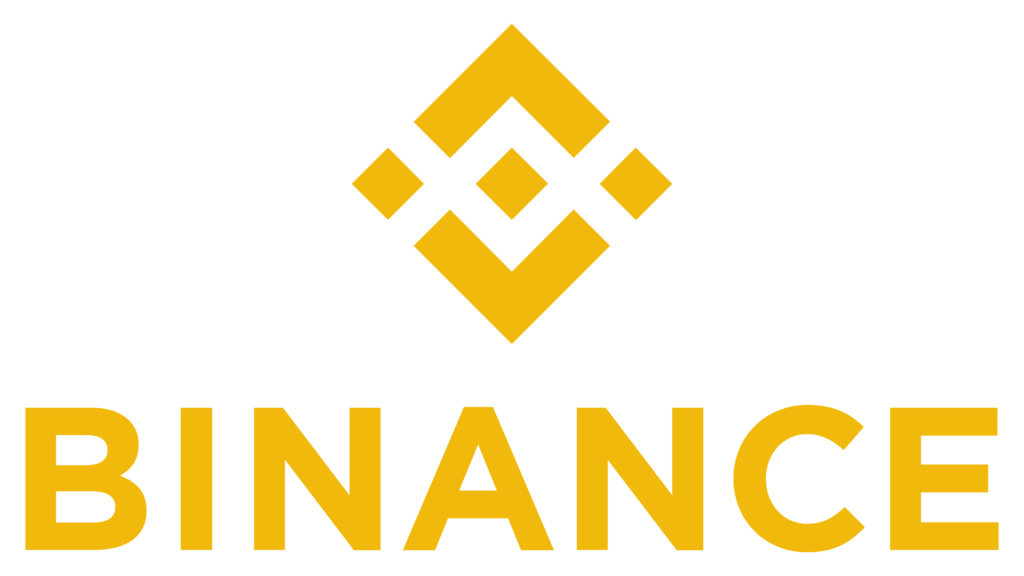Oil has held its spot as one of the most valuable commodities in the world for decades. From Asia to Europe to Africa to America, oil has remained a vital component of the global economy. Because of oil’s role in global economies, it’s no surprise that many people invest in this commodity. Without mincing words, investing in oil can be a lucrative opportunity for individuals looking to earn significant returns on their investment while diversifying their portfolio.
That said, investing in oil is no child’s play. It can be complex and risky, especially for investors just starting.
In this guide, we will give you a detailed walkthrough on how to invest in oil. Not just that, we will also highlight the different ways you can invest in oil and the risks and benefits involved. Read on as we take you through the basics of oil investment.
How to invest in oil: Methods of investment
Sure, investing in oil is a brilliant move for anyone who wants to make significant returns on their investment. And guess what? There are several ways you can invest in oil. In this section, we will highlight the different ways to invest in oil. Keep in mind that each of these methods has its risks and advantages. Here, check out the popular ways to invest in oil.
Investing in oil stocks
One of the most popular ways to invest in oil is to purchase oil company stocks. When you buy shares or stocks in oil companies, you’re essentially buying a share of ownership in those companies. As the company’s value increases, so does your stock or share.
If you have always wanted to take a passive approach to investing in oil, investing in oil stocks will be an excellent place to start. That said, keep in mind that the stock market can be insanely volatile. This means that your stock can fluctuate significantly based on market conditions and company performance.
Investing in oil futures
Another remarkable way to invest in oil is by purchasing oil futures. For those who are hearing about this for the first time, oil futures are contracts that allow investors to buy or sell oil at specific prices and dates in the future.
If you are looking for an active form of investment that requires monitoring market conditions and executing strategic trades, investing in oil futures is one way to go at it.
If you’re comfortable taking on more risks or you’re willing to manage your investment, then investing in oil futures is a good option. Notwithstanding, you must always remember that investing in oil futures can be complex. Plus, it requires a high level of knowledge and experience.
Investing in exchange-traded funds (ETFs)
Exchange Traded Funds, or ETFs, as they are popularly called, are a type of investment fund that are traded on stock exchanges. They are traded like individual stocks. If you have always wanted to invest in oil without focusing on specific companies or futures contracts, then investing in ETFs will be a brilliant move.
When you put your hard-earned money in an oil ETF, what you’re doing is buying a share of a portfolio of oil-related assets, such as oil company stocks or futures contracts.
What’s incredibly unique about oil ETFs is that they not only provide you an opportunity to diversify your stocks but also lower the risks associated with investing in individual stocks or futures contracts.
Investing in Master Limited Partnerships (MLP)
Master Limited Partnerships (MLP) is one of the popular ways of investing in oil. This type of investment allows investors to own shares in companies involved in the transportation, storage, and distribution of oil and gas.
If you have always wanted an investment opportunity that allows you to earn regular income from your investment, investing in MLPs will be a brilliant move, as this form of investment brings about high dividends.
Nonetheless, keep in mind that investing in MLPs is a bit complex and requires a high level of skill and experience.
Risks and benefits of investing in oil
Like every other investment, investing in oil has its own risks and benefits. In this section, we will show you some of the most important things to consider before investing in oil. We will begin with some of the benefits of investing in oil.
Benefits of investing in oil
- Potential for high returns: Investing in oil provides an opportunity for high returns, especially when oil prices are high.
- Diversification: Investing in oil is a brilliant way to diversify your investment portfolio and reduce your overall risk.
- Hedge against inflation: It’s a known fact that oil prices skyrocket during periods of inflation. So if you’re looking for an investment opportunity that will provide a hedge against inflation, investing in oil wouldn’t be a bad idea.
Risks of investing in oil
- Volatility: The oil market can be insanely volatile, with prices fluctuating as a result of factors like natural disasters, supply, and demand, as well as economic and geopolitical events.
- Environmental concerns: The oil industry has come under serious criticism over the years due to the environmental concerns caused by oil exploration. This has resulted in increased regulation and financial liabilities for investors.
- Geopolitical risks: Indeed, the oil sector is often impacted by geopolitical events such as conflicts, political instability, and even trade disputes. When this happens, it typically impacts the supply and demand of oil. Overall, this tends to greatly impact oil prices.
- Technological advancement: The rise of renewable energy sources and advancement in technology, especially in the energy industry, has begun to affect the demand for oil in the long term. If nothing is done to address this trend, it could begin to negatively impact investors.
Top tips for investing in oil
- Do your research: Before putting your hard-earned money into oil investment, it’s always important to do due diligence. By due diligence, we mean having a deep understanding of the various methods of oil investment. Also, you need to know the risks and benefits as well as prevailing market conditions associated with oil investment.
- Diversify your portfolio: It’s true that investing in oil can be risky. This is why experts encourage investors to diversify their portfolios. This way, you wouldn’t be putting all your eggs in one basket.
- Keep track of market conditions: The oil market can be pretty volatile. To this end, it’s important you keep track of market conditions. Also, we encourage adjusting your investment accordingly.
- Seek professional guidance: If you’re just getting started with oil investment, going at it alone and without any form of guidance will be shooting yourself in the foot. To be on the safe side, it’s always a good move to seek professional advice from a professional.
How has oil performed?
Oil is a highly volatile commodity that has seen significant fluctuations in price over the years. The performance of oil has been impacted by a variety of factors, including global demand, geopolitical tensions, and supply and production levels.
In recent years, the price of oil has experienced significant fluctuations. In late 2014, the price of oil began to decline rapidly, falling from over $100 per barrel to under $30 per barrel in early 2016. This drop in price was largely due to oversupply in the market, as countries like Saudi Arabia increased production to protect market share and compete with new sources of oil, such as US shale.
Since then, the price of oil has shown some signs of recovery. In 2017 and 2018, oil prices remained relatively stable, with the price of Brent crude oil hovering between $50 and $80 per barrel. However, in 2020, the COVID-19 pandemic caused a significant drop in demand for oil, leading to a dramatic decrease in price.
By April 2020, the price of WTI crude oil had dropped into negative territory for the first time in history as storage facilities filled up ,and there was nowhere to store excess oil. However, oil prices began to rebound in the second half of 2020, as demand slowly started to recover and OPEC+ countries agreed to production cuts to help stabilize the market.
As of February 2023, the price of oil remains highly volatile and subject to a variety of factors, including supply and demand levels, global economic conditions, and geopolitical tensions. Investors interested in investing in oil should carefully research and monitor the market to stay informed on current trends and events that may impact the price of oil.
How to buy oil online
Buying oil online is a relatively simple process, but it’s important to understand the different options available and the risks involved before making any investments. Here’s a step-by-step guide on how to buy oil online:
Step 1: Choose your method of investment
There are several ways to invest in oil online, including buying stocks in oil companies, investing in oil ETFs (exchange-traded funds), purchasing futures contracts, or investing in master limited partnerships (MLPs). Each method has its own advantages and disadvantages, so it’s important to do your research and choose the method that best aligns with your investment goals and risk tolerance.
Step 2: Choose a brokerage firm
Once you have decided on your method of investment, you’ll need to choose a brokerage firm to facilitate your investments. Look for a reputable and reliable brokerage firm that offers the investment options you’re interested in and has low fees and commissions.
Step 3: Open an account
To buy oil online, you’ll need to open a brokerage account with the firm you’ve chosen. This typically involves filling out an online application and providing personal and financial information, such as your name, address, social security number, and bank account information.
Step 4: Fund your account
After your account is approved, you’ll need to fund it with money to make your investments. This can typically be done by linking your bank account to your brokerage account and transferring funds electronically.
Step 5: Place your order
Once your account is funded, you can place an order to buy the oil investment of your choice. This can typically be done online or through your brokerage firm’s mobile app. Be sure to carefully review the details of your order, including the price, quantity, and any associated fees.
Step 6: Monitor your investment
After you’ve made your investment, it’s important to monitor your account regularly to track the performance of your investment and adjust your strategy as needed. Keep an eye on market conditions and be prepared to sell your investment if necessary to minimize your losses.
In conclusion, buying oil online can be a viable investment option for those who are willing to do their research and understand the risks involved. By choosing the right method of investment, selecting a reputable brokerage firm, funding your account, placing your order, and monitoring your investment, you can potentially earn significant returns on your investment in oil.
How to buy oil on eToro
Buying oil on eToro is a simple process that can be completed in just a few steps. Here’s how to buy oil on eToro:
Step 1: Open an account on eToro
To buy oil on eToro, you’ll first need to open an account on the platform. This involves providing personal and financial information, such as your name, address, and payment details.
Step 2: Fund your account
After your account is approved, you’ll need to fund it with money to make your investments. This can typically be done by linking your bank account or credit/debit card to your eToro account and transferring funds electronically.
Step 3: Find oil on the platform
Once your account is funded, you can find oil on the eToro platform by searching for “oil” in the search bar. This will show you a list of oil-related assets available for trading on the platform.
Step 4: Choose an oil-related asset
eToro offers a variety of oil-related assets, including stocks of oil companies, oil ETFs, and oil futures. Choose the asset that aligns with your investment goals and risk tolerance.
Step 5: Place your order
After you’ve selected your oil-related asset, you can place an order to buy it on the eToro platform. This can be done by clicking on the “Buy” button next to the asset, entering the amount you want to invest, and confirming your purchase.
Step 6: Monitor your investment
After you’ve made your investment, it’s important to monitor your account regularly to track the performance of your investment and adjust your strategy as needed. Keep an eye on market conditions and be prepared to sell your investment if necessary to minimize your losses.
Frequently asked questions
Is investing in oil a good idea?
Investing in oil is a brilliant move for anyone looking to diversify their portfolio. Also, if you’re looking for an investment opportunity that provides the potential for significant return, investing in oil wouldn’t be a bad choice. That said, keep in mind that investing in oil can be quite risky. So ensure you factor in these risks and do due diligence before investing in oil.
What is the best way to invest in oil?
While there are several ways to invest in oil, the best way to invest in oil typically involves the one that is in line with your investment goals and risk tolerance. Some of the popular ways of investing in oil include investing in oil futures, oil stocks, ETFs, and MLPs.
Are there any risks that come with investing in oil?
There are a couple of risks associated with investing in oil. From volatility to geopolitical risks to environmental concerns to technological advancements and more, all these factors pose a significant risk to oil prices.
Conclusion
Sure, investing in oil can be a bit complex and risky, especially for people just starting, but guess what? Investing in oil provides significant opportunities for those willing to take the risks involved. To make the most out of your oil investment, we recommend doing your due diligence and managing the risks that come with oil investment.
By having a solid understanding of the different methods of oil investment, the risks and benefits, as well as tips for getting started, you’ll be able to make an informed decision.







